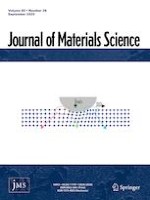19.05.2020 | Energy materials
Highly ordered carbon nanotubes to improve the conductivity of LiNi0.8Co0.15Al0.05O2 for Li-ion batteries
Erschienen in: Journal of Materials Science | Ausgabe 26/2020
EinloggenAktivieren Sie unsere intelligente Suche, um passende Fachinhalte oder Patente zu finden.
Wählen Sie Textabschnitte aus um mit Künstlicher Intelligenz passenden Patente zu finden. powered by
Markieren Sie Textabschnitte, um KI-gestützt weitere passende Inhalte zu finden. powered by
